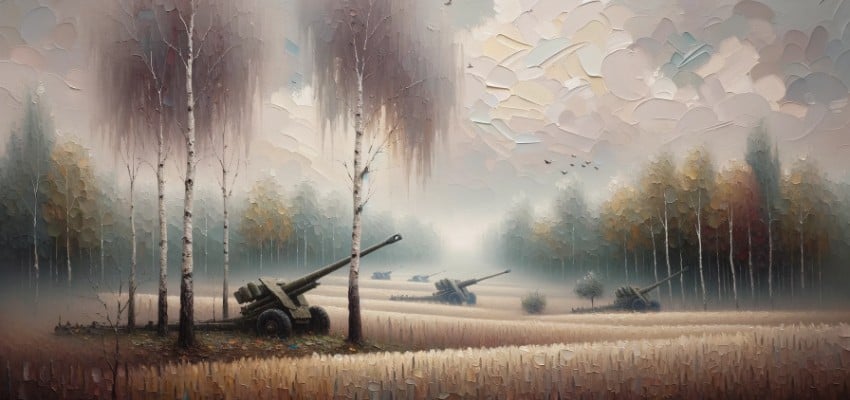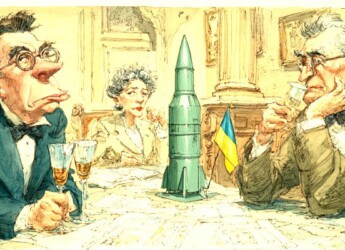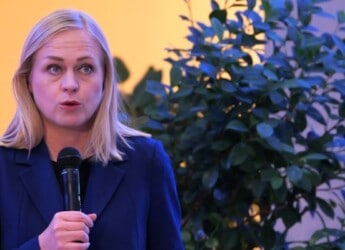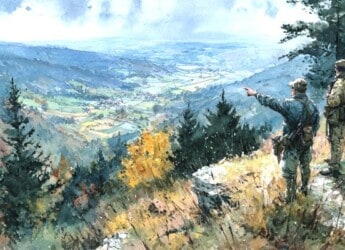|
|
Content Assessment: Mangling in Manpower and Munitions: Russia's Attritional Struggles in Ukraine (October 16-23, 2023)
Information
Insight
Relevance
Objectivity
Authority
Excellent
A short assessment of the qualitative benefit of the recent synthesis of reporting from the Institute for the Study of War on the Russo-Ukrainian War from October 16-23, 2023.
Editor’s Note: The grinding war in eastern Ukraine continues, with Russia struggling to make gains in bloody offensives around Avdiivka and Bakhmut. Ukraine maintains pressure with crossings in Kherson and counterattacks. The impacts of Western aid are apparent – ATACMS strikes forced Russian air defense changes while North Korean artillery deals boost munitions. Manpower shortfalls push controversial minority targeting. Domestic dissent manifests in milblogger warnings and lawyer protests. But neither side is delivering a decisive blow, pointing to a protracted attritional fight this winter. Artillery balances and Western provisions remain decisive amid Russia’s losses and adaption struggles.
Source Note: One of the most accurate and detailed sources for ongoing updates on the Ukraine crisis is the Russian Offensive Campaign Assessment from the Institute for the Study of War. The Institute for the Study of War (ISW) is a 501(c)(3) organization and produces strictly non-partisan, non-ideological, fact-based research. ISW seeks to promote an informed understanding of war and military affairs through comprehensive, independent, and accessible open-source research and analysis. ISW’s research is made available to the general public, military practitioners, policymakers, and media members. Providing a daily synthesis of key events related to the Russian aggression against Ukraine, ISW updates may benefit investigators and litigators as they follow the business, information technology, and legal trends and trajectories impacted by and stemming from the current Russo-Ukrainian conflict.
For those seeking to grasp the full scope of this evolving landscape, the complete updates from the Institute for the Study of War serve as an invaluable resource.
Assessments and Maps*
Russo-Ukrainian Conflict Assessments
- Institute for the Study of War (ISW), Russia Team
- Critical Threats Project (CTP), American Enterprise Institute
General Assessment Background Info
- ISW systematically publishes Russian campaign assessments, including maps highlighting the assessed control of terrain in Ukraine and main Russian maneuver axes.
- Maps augment daily synthetic products that cover key events related to the Russian aggression against Ukraine.
The Russian Offensive Campaign Assessments
Overall Summary
The following narrative report summarizes key events and themes from daily campaign assessments of the Russia-Ukraine war by experts at the Institute for the Study of War during the period of October 16-23. It combines details from each day into one chronological account of critical developments in the ongoing crisis. The daily assessments draw on public reports and expertise from Institute for the Study of War (ISW) analysts.
October 16: Russia Deploys More Forces to Avdiivka Amid Continued Heavy Fighting
On October 16, continued heavy fighting persisted around Avdiivka, as Russia likely deployed elements of the 15th and 21st Motor Rifle Brigades from the Central Military District to reinforce offensive operations by Donetsk People’s Republic forces. A Russian milblogger observed Ukraine is successfully attriting Russian reserves in the ongoing operations. Ukraine continued counteroffensive operations near Bakhmut and Zaporizhia, with Russian sources claiming Ukraine advanced to within 300 meters of Russian positions near Verbove on October 16. Russia also imposed new restrictions only allowing Ukrainians to enter from third countries through Moscow’s Sheremetyevo Airport, prompting backlash. Cracks within Russia’s domestic information and political control also became evident as Russian lawyers called for a strike to protest legal abuses amid politicized prosecutions on October 16.
October 17: Ukraine’s ATACMS Strikes Prompt Russian Adaptations
On October 17, Ukraine’s debut use of US-provided ATACMS missiles struck Russian airfields in Berdyansk and Luhansk, likely forcing adaptations by Russia. Satellite imagery confirmed significant damage to helicopters and infrastructure at Berdyansk. Ukraine claimed the strikes destroyed 9 helicopters, among other assets. The strikes are prompting Russia to disperse aircraft to rearward airfields over 50km from the frontline, complicating aviation support for offensive operations. Intense battles continued around Bakhmut and Avdiivka, with Ukraine downing five Russian jets in 10 days amid mounting Russian losses, according to officials on October 19. Russia moved to consolidate domestic political control ahead of the 2024 elections, passing new restrictions on campaign materials in the State Duma on October 17.
October 18: Ukraine’s Kherson Operations Spark Russian Concerns
On October 18, Ukraine conducted larger-scale operations across the Dnipro River near Kherson, concerning Russia about a wider offensive. Geolocated footage showed Ukrainian advances north of Pishchanivka, while Russian sources expressed pronounced concern about the operations potentially enabling a larger bridgehead. Russia claimed the forces are comprised of less combat-effective units like elements of the 49th Combined Arms Army.
October 19: Ukraine Maintains Kherson Presence As Russia Turns to North Korea
On October 19, confirmation emerged that Ukraine is maintaining a presence on Kherson’s east bank, with Russia voicing continued concerns. A Russian milblogger claimed Ukrainian forces have some presence in Krynky. Meanwhile, Lavrov’s visit to Pyongyang highlighted Russia’s reliance on North Korean artillery ammunition to sustain rates of fire. A Russian blogger’s admission that Ukraine is successfully attriting Russian reserves also emerged. Putin held talks in Beijing about deepening political and economic ties with China.
October 20: Russia Renews Avdiivka Push Amid Ongoing Challenges
On October 20, Russia launched a renewed offensive push on Avdiivka despite recent failures, indicating the insistence on gains in Donbas even amid losses. Geolocated footage showed marginal Russian gains past the E50 road south of Avdiivka. A Russian milblogger observed continued issues in breaking through heavy Ukrainian fortifications around the city. Putin also visited Russian military leadership, with his publicized meeting indicating they remain the face of Russian operations.
October 21: Russia Struggles to Disrupt Ukrainian Operations in Kherson
On October 21, Ukraine likely repelled another Russian offensive effort toward Avdiivka, inflicting heavy losses. Russia struggles to disrupt Ukrainian resupply of the Kherson east bank, with Ukrainian forces likely maintaining a presence near the Dnipro River shoreline and Antonivsky railway bridge. Russia may be diversifying its missile and drone arsenal for strikes, likely to probe Ukrainian air defenses.
October 22: Russia Targets Minorities Amid Manpower Shortfalls
On October 22, Russia renewed its bloody offensive on Avdiivka despite recent failures, showing the insistence on gains in Donbas. Russian mobilization is increasingly targeting ethnic minorities, revealing domestic fractures. The provision of a limited number of ATACMS missiles to Ukraine elicited a muted Kremlin response amid their immediate battlefield impacts. Russia continued censoring critical milbloggers that could undermine morale.
October 23: North Korean Artillery Stocks to Boost Russia’s Firepower
On October 23, it emerged that North Korea will likely be able to provide sufficient artillery ammunition to sustain Russia’s lower rates of fire in 2024, even as domestic production declines. Russia’s domestic production and North Korean imports can likely sustain firing rates sufficient for defensive operations, though likely not at the level necessary for major offensive pushes. This indicates that artillery will remain a core part of Russia’s arsenal in the year ahead, allowing continued bombardment of Ukrainian positions even if large-scale ground offensives become more difficult. The degree to which Ukraine’s international partners can sustain its own artillery stockpiles will be decisive in shaping the firepower balance moving forward. Meanwhile, despite contrary messaging, Russia emphasized defense spending in its 2024 budget over social programs. The first Ukrainian pilots began F-16 training, providing optimism.
Themes and Dynamics
Several key themes and dynamics emerge from these developments. The grinding battles in Donbas, with marginal Russian gains amid heavy losses, signals a continued protracted war of attrition. Russia is struggling to make substantive progress before winter fully sets in. The provision of Western military aid is shaping the battlefield, as evidenced by the immediate impacts of ATACMS missiles on Russian air capabilities. Ukraine’s determination to retake occupied territory is also on display with the Kherson crossings.
At the same time, cracks in Russia’s domestic control persist. The increasing reliance on ethnic minority conscripts reveals fundamental force generation challenges. Looking ahead, Russia’s mounting losses and deepening force generation challenges suggest its gains this winter may be limited. Western aid will remain decisive in bolstering Ukraine’s defenses. The trajectory points to a continued grinding war, with neither side able to deliver a decisive blow.
We do not report in detail on Russian war crimes because those activities are well-covered in Western media and do not directly affect the military operations we are assessing and forecasting. We will continue to evaluate and report on the effects of these criminal activities on the Ukrainian military and population and specifically on combat in Ukrainian urban areas. We utterly condemn these Russian violations of the laws of armed conflict, Geneva Conventions, and humanity even though we do not describe them in these reports.
Detailed Reporting with Maps for October 16 – 23, 2023, from the ISW – Mouseover to Scroll
Oct 16 – 23 2023 – Russian Offensive Campaign AssessmentReview the Detailed Reporting and Maps PDF
See the Institute for the Study of War Interactive Map of the Russian Invasion
Read the latest Ukraine Conflict updates from the Institute for the Study of War
* Shared with direct express permission from the Institute for the Study of War (ISW).
About the Institute for the Study of War Research Methodology
ISW’s research methodology relies on both primary and secondary sources, enabling researchers to develop a comprehensive understanding of the situation on the ground. In order to analyze military and political developments in any given area, ISW’s research analysts must wholly understand the systems of enemy and friendly forces. They must also understand the population demographics, physical terrain, politics, and history of that area. This lays the analytical foundation for understanding the reasons for particular developments and fulfilling their assigned research objectives. ISW analysts also spend time in places like Iraq, Afghanistan, and elsewhere in order to gain a better understanding of the security and political situation and to evaluate the implementation of current strategies and policies. Our researchers compile data and analyze trends, producing a granular analysis of developments in areas of research, producing an accurate, high-resolution, timely, and thorough picture of the situation. ISW’s research methodology guarantees its success and commitment to improving the nation’s ability to execute military operations, achieve strategic objectives, and respond to emerging problems that may require the use of American military power.
About the Institute for the Study of War
The Institute for the Study of War advances an informed understanding of military affairs through reliable research, trusted analysis, and innovative education. We are committed to improving the nation’s ability to execute military operations and respond to emerging threats in order to achieve U.S. strategic objectives. ISW is a non-partisan, non-profit, public policy research organization.
Learn more, get involved, and contribute today.
Additional Reading
- From Dissent to OSINT? Understanding, Influencing, and Protecting Roles, Reputation, and Revenue
- [Annual Update] International Cyber Law in Practice: Interactive Toolkit
- Data Embassies: Sovereignty, Security, and Continuity for Nation-States
Assisted by GAI and LLM Technologies
Source: ComplexDiscovery








































